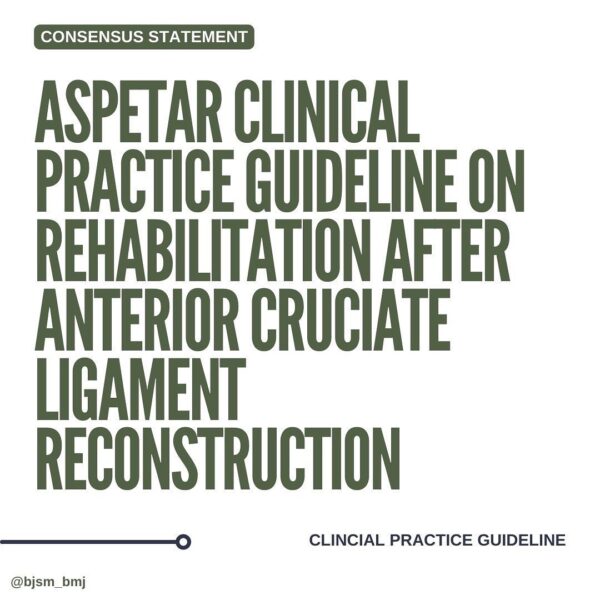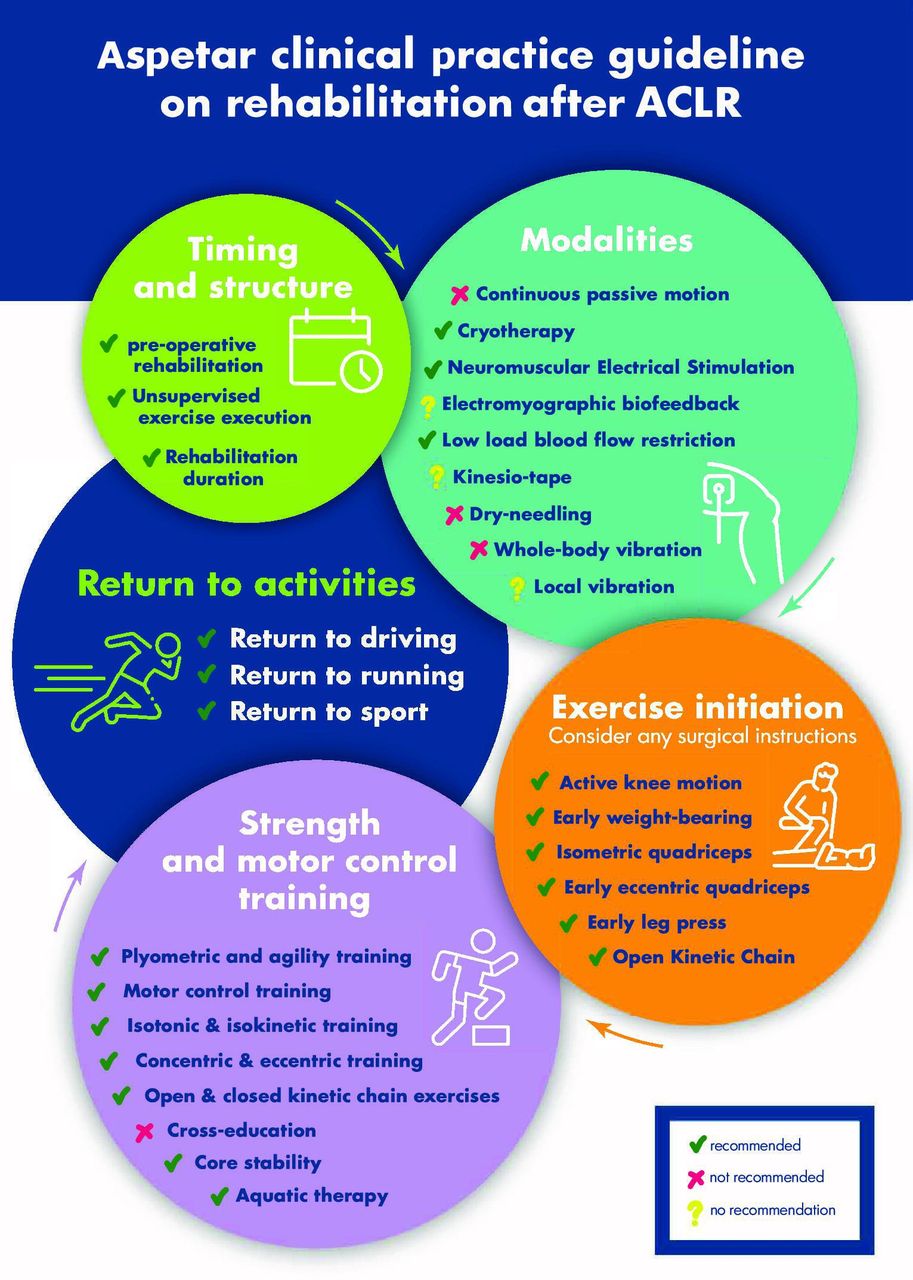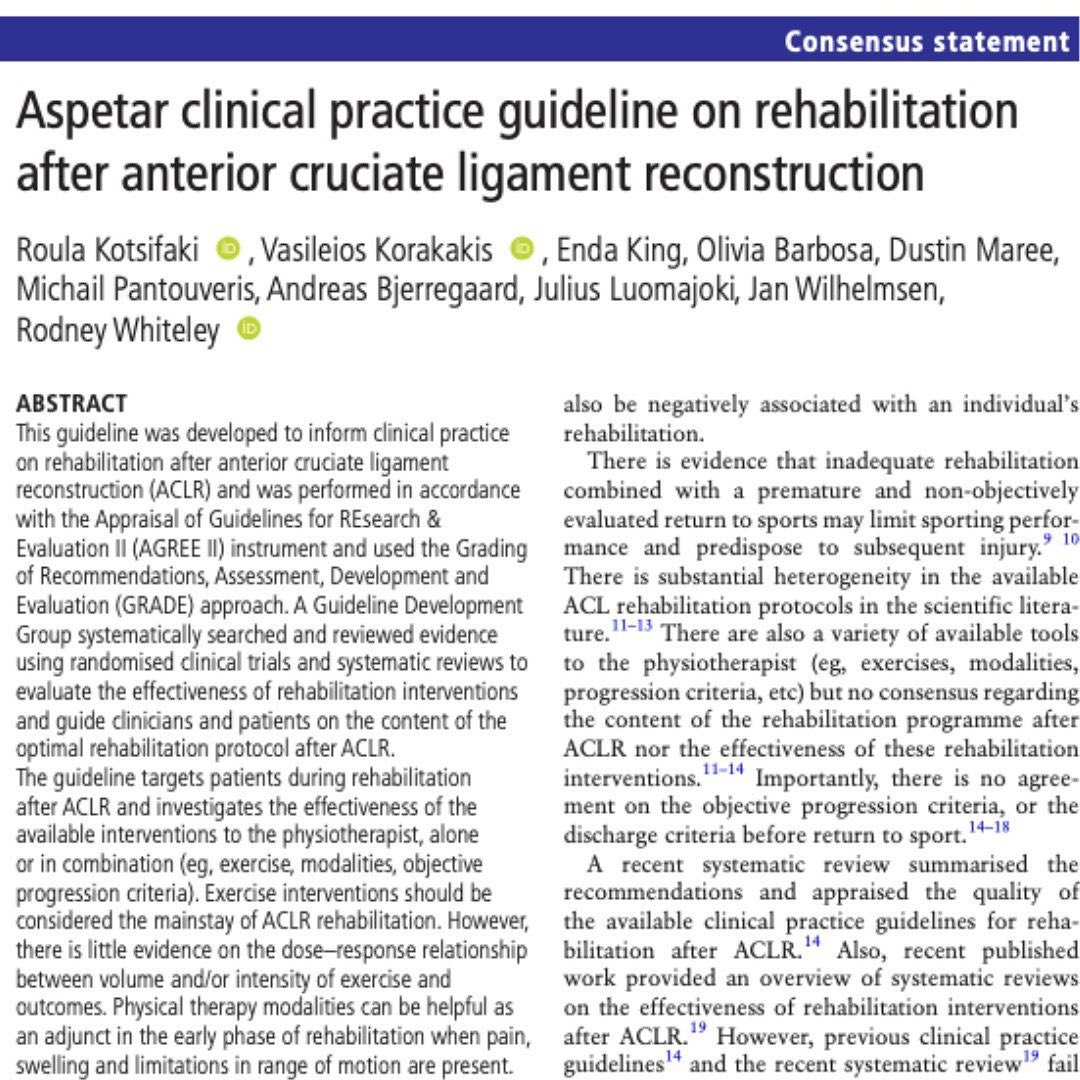Clinical Practice Guideline on rehabilitation ACLR
Navigation:
- How do I find a good ACL physical therapist?
- How do I find a good ACL doctor?
- Zamst
- Why are so many female footballers suffering ACL injuries?
- Aspetar Clinical Practice Guideline on rehabilitation ACLR
- Melbourne ACL Rehabilitation Guide
- HOW an athlete returns is more critical than WHEN
- Anterior Cruciate Ligament (ACL) Injury Hidden in the Complex Sensorimotor System
- ACL Reference Values
- Psychological readiness
- Virtual Reality and Artificial Intelligence: Transforming Injury and ACL Rehabilitation
- ACL rehab staying motivated
- The Team ACL effect
- Keiser
- Game Ready Pro 2.1.
- Compex
- ACL reconstruction rehabilitation: decades of change
- Reference values for quadriceps and hamstrings strength & double- and single-leg jump tests
- Return to running too quickly after ACL surgery
- Blood Flow Restriction Training in ACL Rehab
- Interview TeamACL professional Luis Escudero
- Influence of female sex and graft choice on the incidence of cyclops lesions after ACL reconstruction
- 10 Mistakes why ACL rehab regularly fails
- Isokinetic testing after ACL rehabilitation in football players
- Return to sports after an ACL reconstruction in 2024
- Latest content
This guideline was developed to inform clinical practice on rehabilitation after anterior cruciate ligament reconstruction (ACLR) and was performed in accordance with the Appraisal of Guidelines for REsearch & Evaluation II (AGREE II) instrument and used the Grading of Recommendations, Assessment, Development and Evaluation (GRADE) approach.
A Guideline Development Group systematically searched and reviewed evidence using randomised clinical trials and systematic reviews to evaluate the effectiveness of rehabilitation interventions and guide clinicians and patients on the content of the optimal rehabilitation protocol after ACLR.

A Guideline Development Group systematically searched and reviewed evidence using randomised clinical trials and systematic reviews to evaluate the effectiveness of rehabilitation interventions and guide clinicians and patients on the content of the optimal rehabilitation protocol after ACLR.
“ ”
ASPETAR CLINICAL PRACTICE GUIDELINE ON REHABILITATION AFTER ACL RECONSTRUCTION


The guideline targets patients during rehabilitation after ACLR and investigates the effectiveness of the available interventions to the physiotherapist, alone or in combination (eg, exercise, modalities, objective progression criteria).
Exercise interventions should be considered the mainstay of ACLR rehabilitation.
However, there is little evidence on the dose–response relationship between volume and/or intensity of exercise and outcomes.
Physical therapy modalities can be helpful as an adjunct in the early phase of rehabilitation when pain, swelling and limitations in range of motion are present.
Adding modalities in the early phase may allow earlier pain-free commencement of exercise rehabilitation.
Return to running and return to training/activity are key milestones for rehabilitation after ACLR. However, there is no evidence on which progression or discharge criteria should be used.
While there is a very low level of certainty for most components of rehabilitation, most of the recommendations provided in this guideline were agreed to by expert clinicians.
This guideline also highlights several new elements of ACLR management not reported previously.

